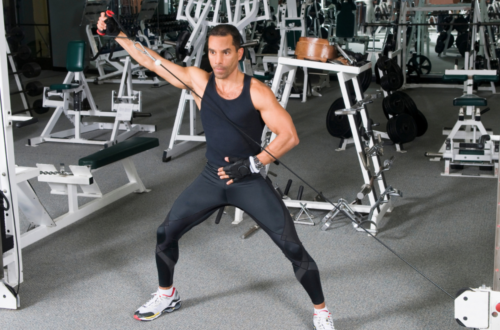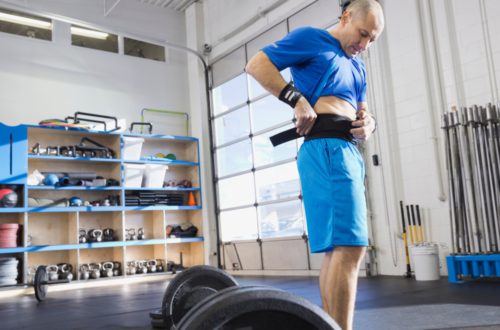
19 Alternatives to Squats for Home and Gym Workouts
Squats are an excellent exercise for building lower body strength, but they are not suitable for everyone. Some people may have knee or back issues that make squats uncomfortable or even painful. Fortunately, there are many effective alternatives to squats that can help you achieve similar fitness goals.
Why Look For Squat Alternatives?
There are many exercises that target similar muscle groups without the need for squats. Let’s explore why you might look for alternatives to squats and what benefits they offer.
Benefits Of Squat Alternatives
Squat alternatives can provide numerous benefits, especially for those who can’t perform traditional squats. Here are some key advantages:
- Reduced Joint Strain: Some squat alternatives place less stress on the knees and hips.
- Variety in Workouts: Adding different exercises prevents boredom and keeps your routine fresh.
- Injury Prevention: Alternatives can help avoid aggravating existing injuries.
Incorporating squat alternatives can also help in targeting muscles more effectively. For example:
| Exercise | Primary Benefit |
|---|---|
| Lunges | Improves balance and stability |
| Step-Ups | Strengthens legs and glutes |
| Leg Press | Reduces back strain |
Flexibility: Many squat alternatives can be done with or without equipment, making them ideal for home workouts. This flexibility allows you to maintain a consistent fitness routine even when you can’t access a gym.
Muscle Groups Targeted By Squat Alternatives
Squat alternatives target a range of muscle groups, ensuring a comprehensive workout. These exercises often engage multiple muscles, promoting overall fitness:
- Quadriceps: Many alternatives like lunges and step-ups focus on the front thigh muscles.
- Hamstrings: Exercises such as deadlifts and bridges target the back of the thighs.
- Glutes: Movements like glute bridges and hip thrusts strengthen the buttocks.
Below is a table illustrating which muscle groups are targeted by popular squat alternatives:
| Exercise | Targeted Muscle Groups |
|---|---|
| Lunges | Quadriceps, Hamstrings, Glutes |
| Step-Ups | Quadriceps, Glutes |
| Glute Bridges | Glutes, Hamstrings |
| Deadlifts | Hamstrings, Glutes, Lower Back |
By understanding which muscles are targeted, you can choose the best exercises to meet your fitness goals. This ensures a balanced workout and helps in building strength effectively.
Best Squat Alternatives At Home
Here are some of the best squat alternatives you can do at home, ensuring you still get a great workout without the traditional squat.
Lunges (forward, Reverse, And Walking)
Lunges are a fantastic alternative to squats because they target similar muscle groups. You can perform them in various forms:
- Forward Lunges: Step forward and lower your body until both knees are at 90-degree angles. Push back to the starting position.
- Reverse Lunges: Step backward, lowering your body in the same manner as forward lunges. Return to the starting position.
- Walking Lunges: Move forward by stepping into a lunge and then bringing the back leg forward into the next lunge.
Lunges help improve balance and coordination while strengthening the legs and glutes. They also allow for a greater range of motion compared to squats.
Step-ups (using A Chair Or Step)
Step-ups are excellent for building leg strength and enhancing balance. Use a sturdy chair or step:
- Step onto the chair with one foot.
- Press through the heel to lift your body up.
- Step down with the same foot and repeat with the other leg.
Step-ups are versatile and can be made more challenging by holding weights. They primarily target the quads, hamstrings, and glutes.
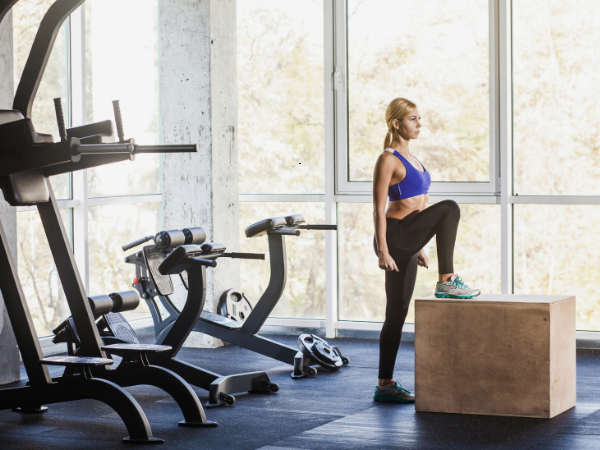
Glute Bridges
Glute bridges are great for targeting the glutes and lower back without putting pressure on the knees:
- Lie on your back with knees bent and feet flat on the floor.
- Lift your hips toward the ceiling, squeezing your glutes at the top.
- Lower back down and repeat.
This exercise also strengthens the core and improves hip mobility. For added resistance, place a weight on your hips.
Bulgarian Split Squats
Bulgarian split squats are a powerful leg exercise that isolates each leg individually:
- Stand a few feet in front of a chair or bench.
- Place one foot behind you on the chair.
- Lower your body until your front thigh is parallel to the ground.
- Push back up to the starting position.
This exercise enhances balance and targets the quads, hamstrings, and glutes. It’s a more advanced movement but highly effective.
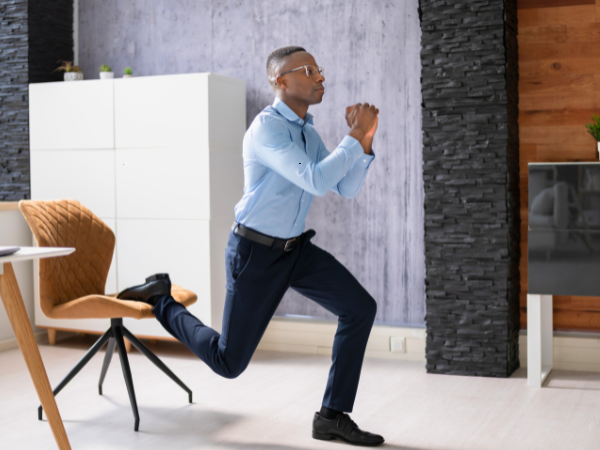
Wall Sits
Wall sits are a simple yet challenging way to build leg endurance and strength:
- Stand with your back against a wall.
- Slide down until your thighs are parallel to the ground.
- Hold this position for as long as possible.
Wall sits primarily work the quads and can be made more challenging by holding weights.
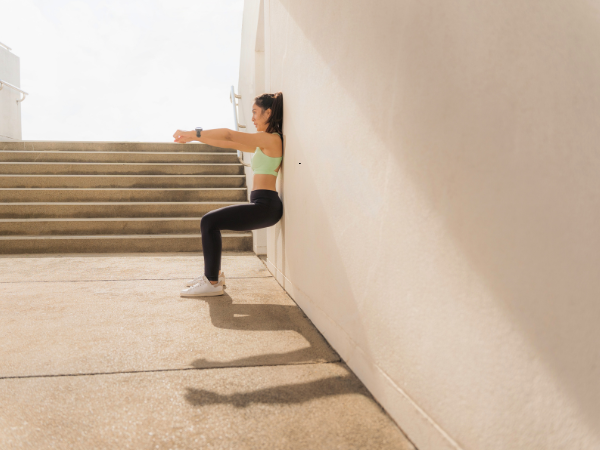
Single-leg Deadlifts
Single-leg deadlifts are excellent for improving balance and targeting the hamstrings and glutes:
- Stand on one leg, with the other leg slightly lifted.
- Lean forward, extending the lifted leg behind you.
- Return to the starting position.
This exercise enhances stability and core strength. It can be performed with or without weights.
Leg Kickbacks
Leg kickbacks focus on the glutes and require no equipment:
- Start on all fours, with hands under shoulders and knees under hips.
- Extend one leg straight back and up, squeezing the glute at the top.
- Return to the starting position and switch legs.
This movement helps build glute strength and improve hip mobility.
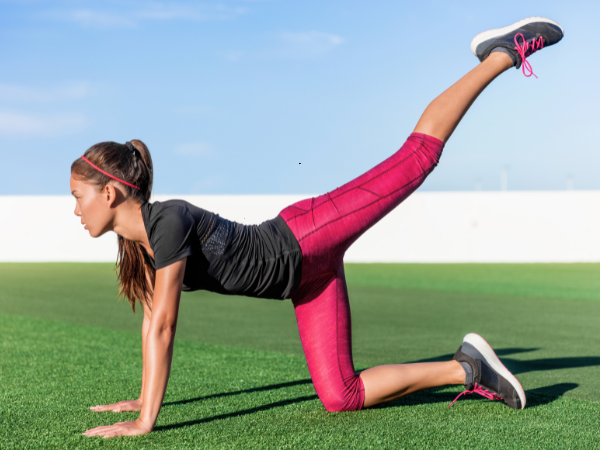
Lateral Lunges
Lateral lunges are perfect for targeting the inner and outer thighs:
- Step out to the side, bending the knee and lowering your body.
- Keep the other leg straight.
- Push back to the starting position and switch sides.
Lateral lunges improve lateral movement and strengthen the legs and glutes.
Chair Squats (modified For Beginners)
Chair squats are ideal for beginners or those with knee issues:
- Stand in front of a chair with feet shoulder-width apart.
- Lower your body to sit on the chair, then stand back up.
- Repeat for the desired number of reps.
This exercise helps build leg strength and confidence in squatting motions. It’s a gentle introduction to squats, reducing the risk of injury.
Best Squat Alternatives At The Gym
For those seeking variety or dealing with limitations, there are many effective alternatives. In this section, we’ll explore the Best Squat Alternatives at the Gym that can help you achieve your fitness goals.
Leg Press
The Leg Press machine offers a fantastic way to build leg muscles without putting stress on your back. It targets the quads, hamstrings, and glutes. Adjust the seat to ensure your knees are at a 90-degree angle when your feet are on the platform.
- Adjustable resistance levels make it suitable for all fitness levels.
- Reduces the risk of back injuries compared to traditional squats.
- Focuses on leg muscles without engaging the core as much.
To perform:
- Set the desired weight.
- Place your feet shoulder-width apart on the platform.
- Push the platform up by extending your legs.
- Slowly return to the starting position.
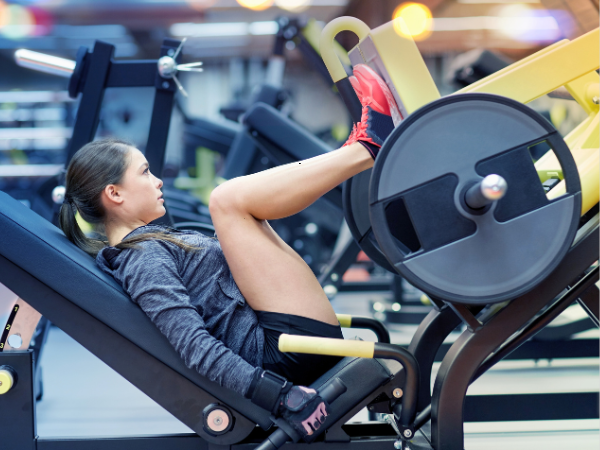
Smith Machine Squats
Smith Machine Squats provide a safer alternative to free-weight squats. The machine guides your movement, reducing the risk of injury. This exercise targets the same muscles as regular squats.
- Offers stability and support during the lift.
- Allows for heavier lifting due to guided motion.
- Reduces the need for a spotter.
To perform:
- Set the bar at shoulder level.
- Position yourself under the bar with feet shoulder-width apart.
- Unrack the bar and squat down until thighs are parallel to the ground.
- Push through your heels to return to the starting position.
Hack Squats
Hack Squats on a dedicated machine offer another excellent squat alternative. This exercise isolates the quads and glutes while providing back support.
- Targets the lower body effectively.
- Provides back support to reduce strain.
- Allows for safe and controlled movement.
To perform:
- Set the desired weight on the machine.
- Position your shoulders and back against the pads.
- Place feet shoulder-width apart on the platform.
- Lower your body by bending your knees and hips.
- Push through your heels to return to the starting position.
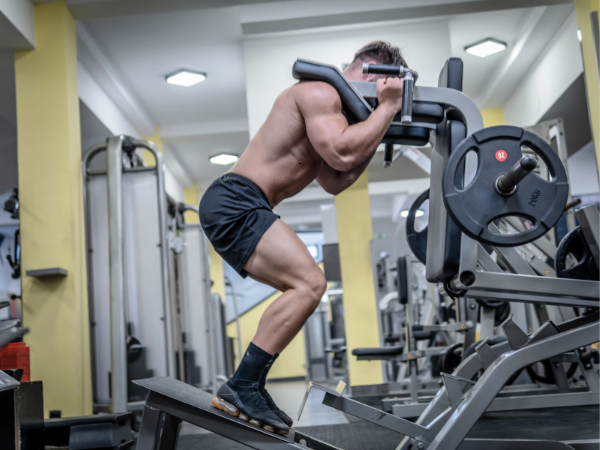
Trap Bar Deadlifts
Trap Bar Deadlifts are a great alternative to squats, focusing on the legs and lower back. The trap bar allows for a neutral grip and reduces stress on the lower back.
- Targets the quads, hamstrings, and glutes.
- Offers a safer lifting position for the lower back.
- Suitable for all fitness levels.
To perform:
- Step inside the trap bar.
- Grip the handles with a neutral grip.
- Stand up by extending your hips and knees.
- Lower the bar back to the ground with control.
Cable Pull-throughs
Cable Pull-Throughs effectively target the glutes and hamstrings while minimizing lower back strain. This exercise uses a cable machine, providing constant tension throughout the movement.
- Great for glute and hamstring activation.
- Reduces stress on the lower back.
- Offers constant tension for better muscle engagement.
To perform:
- Attach a rope handle to the low pulley of a cable machine.
- Stand facing away from the machine with feet shoulder-width apart.
- Hold the rope between your legs and hinge at the hips.
- Pull the rope forward by squeezing your glutes.
- Return to the starting position with control.

Weighted Step-ups
Weighted Step-Ups are a functional exercise that mimics everyday movements. This exercise targets the quads, hamstrings, and glutes, and can be done with dumbbells or a barbell.
- Improves balance and coordination.
- Targets multiple leg muscles simultaneously.
- Can be adjusted for different fitness levels.
To perform:
- Hold dumbbells at your sides or place a barbell on your shoulders.
- Step onto a bench or sturdy platform with one foot.
- Push through the heel to lift your body up.
- Step down with control and repeat with the other leg.
Leg Extensions
Leg Extensions isolate the quadriceps muscles, making them an excellent exercise for targeting the front of the thighs. Using the leg extension machine allows for precise control and resistance adjustment.
- Isolates the quads effectively.
- Allows for adjustable resistance.
- Reduces stress on the lower back.
To perform:
- Sit on the leg extension machine with your legs under the padded bar.
- Adjust the machine so your knees are at a 90-degree angle.
- Extend your legs by straightening your knees.
- Slowly return to the starting position.

Goblet Squats
Goblet Squats are a versatile and effective squat alternative. Holding a dumbbell or kettlebell in front of your chest helps maintain an upright posture and reduces strain on the lower back.
- Improves posture and core stability.
- Targets the quads, hamstrings, and glutes.
- Suitable for beginners and advanced lifters.
To perform:
- Hold a dumbbell or kettlebell at chest level.
- Stand with feet shoulder-width apart.
- Squat down by bending your knees and hips.
- Push through your heels to return to the starting position.
Romanian Deadlifts
Romanian Deadlifts focus on the hamstrings and glutes, making them an excellent alternative to squats. This exercise helps improve hip hinge mechanics and strengthens the posterior chain.
- Targets the hamstrings and glutes.
- Improves hip hinge mechanics.
- Enhances posterior chain strength.
To perform:
- Hold a barbell or dumbbells with an overhand grip.
- Stand with feet hip-width apart.
- Hinge at the hips while keeping your back straight.
- Lower the weights until you feel a stretch in your hamstrings.
- Return to the starting position by extending your hips.
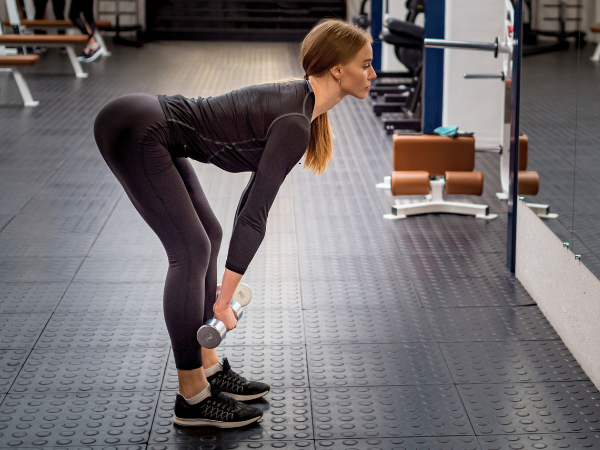
Sled Pushes
Sled Pushes offer a full-body workout with an emphasis on the legs and glutes. This exercise also improves cardiovascular fitness and can be adjusted for different intensity levels.
- Engages the entire body, especially the legs and glutes.
- Improves cardiovascular fitness.
- Adjustable resistance for varied intensity.
To perform:
- Load the sled with the desired weight.
- Position yourself behind the sled with hands on the handles.
- Drive through your legs to push the sled forward.
- Maintain a steady pace and proper form throughout.
How To Choose The Right Alternative For You
Whether you’re at home or in the gym, these 19 alternatives can target your muscles just as effectively. The key is knowing how to choose the right one for you.
Factors To Consider (experience, Equipment, And Goals)
Choosing the right squat alternative depends on several factors. Experience level, available equipment, and personal goals all play a role. Here’s a breakdown to help you make an informed choice:
- Experience Level: Beginners should opt for simpler, low-impact exercises. Advanced athletes might prefer more complex movements.
- Equipment: Do you have access to weights, resistance bands, or machines? Some exercises require specific tools.
- Goals: Are you focusing on strength, endurance, or flexibility? Different exercises target different outcomes.
| Experience Level | Recommended Exercises | Equipment Needed |
|---|---|---|
| Beginner | Bodyweight Lunges, Step-Ups | None or minimal |
| Intermediate | Goblet Squats, Bulgarian Split Squats | Dumbbells, Bench |
| Advanced | Barbell Deadlifts, Plyometric Jumps | Barbells, Plyo Box |
By considering these factors, you can better align your workout to your needs and resources.
How To Modify Exercises For Different Fitness Levels
Modifying exercises ensures everyone can participate, regardless of fitness level. Here are some tips:
- Beginners: Focus on form and control. Use bodyweight exercises before adding resistance.
- Intermediate: Add light weights and increase the range of motion. Maintain proper form.
- Advanced: Incorporate heavier weights and dynamic movements. Challenge your stability and coordination.
For example, a basic lunge can be modified as follows:
- Beginner: Static Lunges – Step forward, hold, and then return to start.
- Intermediate: Walking Lunges – Step forward and then continue stepping with each stride.
- Advanced: Jumping Lunges – Perform a lunge and then jump to switch legs in mid-air.
Another example is the plank:
- Beginner: Knee Plank – Hold plank position on knees instead of toes.
- Intermediate: Standard Plank – Hold plank position on toes with a straight body.
- Advanced: Plank with Leg Lift – Hold plank and alternate lifting each leg.
By modifying exercises, you can ensure a challenging yet safe workout tailored to your fitness level.
Tips For Maximizing Results With Squat Alternatives
To get the most out of these exercises, follow these tips for maximizing results with squat alternatives.
Proper Form And Technique
Maintaining proper form and technique is crucial for avoiding injuries and getting the best results. Here are some tips to ensure you’re doing it right:
- Warm-up: Always start with a warm-up to prepare your muscles and joints. A 5-10 minute light cardio session works well.
- Alignment: Keep your back straight and your core engaged. Proper alignment prevents strain on your lower back.
- Knee Position: Ensure your knees do not extend past your toes. This helps protect your knee joints.
- Controlled Movements: Perform each exercise with slow, controlled movements to maximize muscle engagement.
- Breathing: Breathe in as you lower your body and exhale as you push back up. Proper breathing helps maintain rhythm and endurance.
Here’s a table to help you visualize the correct form for some common squat alternatives:
| Exercise | Key Form Tips |
|---|---|
| Lunges | Keep your back straight, step forward with one leg, and lower your hips until both knees are at 90-degree angles. |
| Step-Ups | Step onto a bench with one foot, press through your heel to lift your body, then step back down. |
| Glute Bridges | Lie on your back, bend your knees, and lift your hips while squeezing your glutes. |
How To Incorporate Squat Alternatives Into Your Routine
Incorporating squat alternatives into your workout routine can enhance muscle development and prevent boredom. Here are some strategies to get started:
- Identify Your Goals: Determine what you want to achieve. Whether it’s strength, endurance, or flexibility, choose exercises that align with your goals.
- Mix It Up: Rotate between different squat alternatives to target various muscle groups. This prevents overuse injuries and keeps your routine exciting.
- Use a Schedule: Plan your workouts for the week. Allocate specific days for lower body exercises and ensure you include a variety of squat alternatives.
- Progressive Overload: Gradually increase the intensity of your exercises. Add weights or increase repetitions to continue challenging your muscles.
- Track Your Progress: Keep a workout journal. Note the exercises, sets, and reps to monitor improvements over time.
Here’s an example of a weekly workout plan:
| Day | Exercise | Sets & Reps |
|---|---|---|
| Monday | Lunges | 3 sets of 12 reps |
| Wednesday | Step-Ups | 3 sets of 10 reps |
| Friday | Glute Bridges | 4 sets of 15 reps |
By following these tips and incorporating a variety of squat alternatives, you can achieve a balanced and effective lower body workout.


